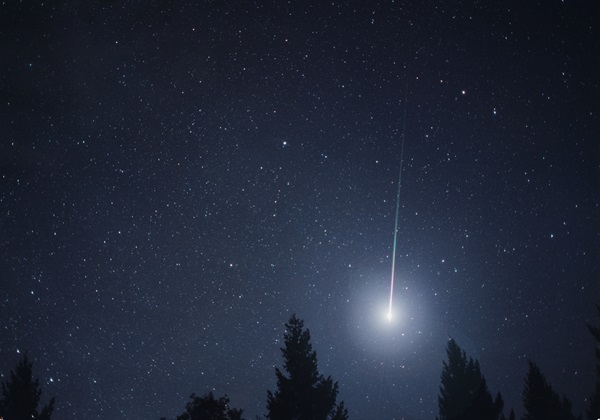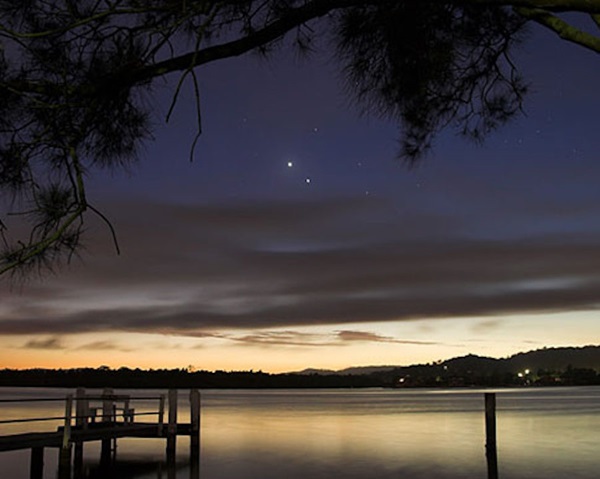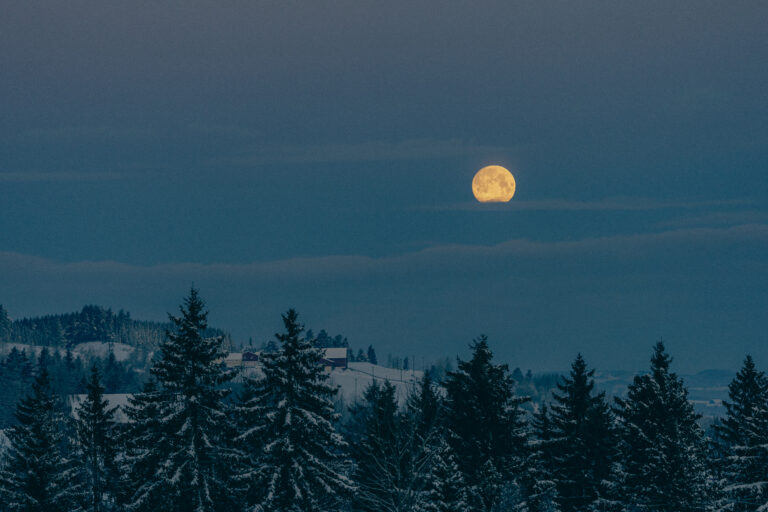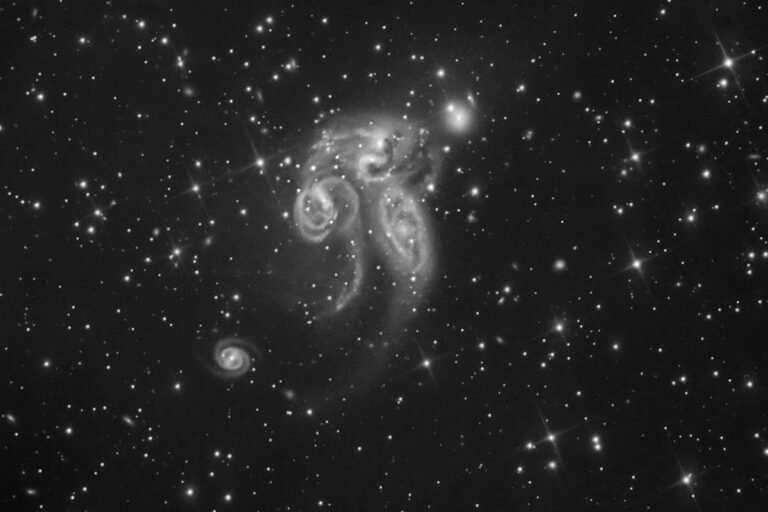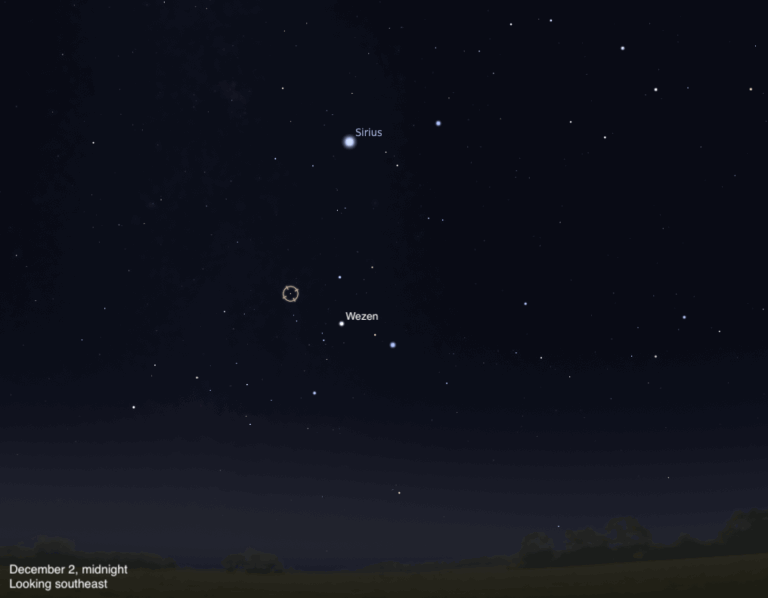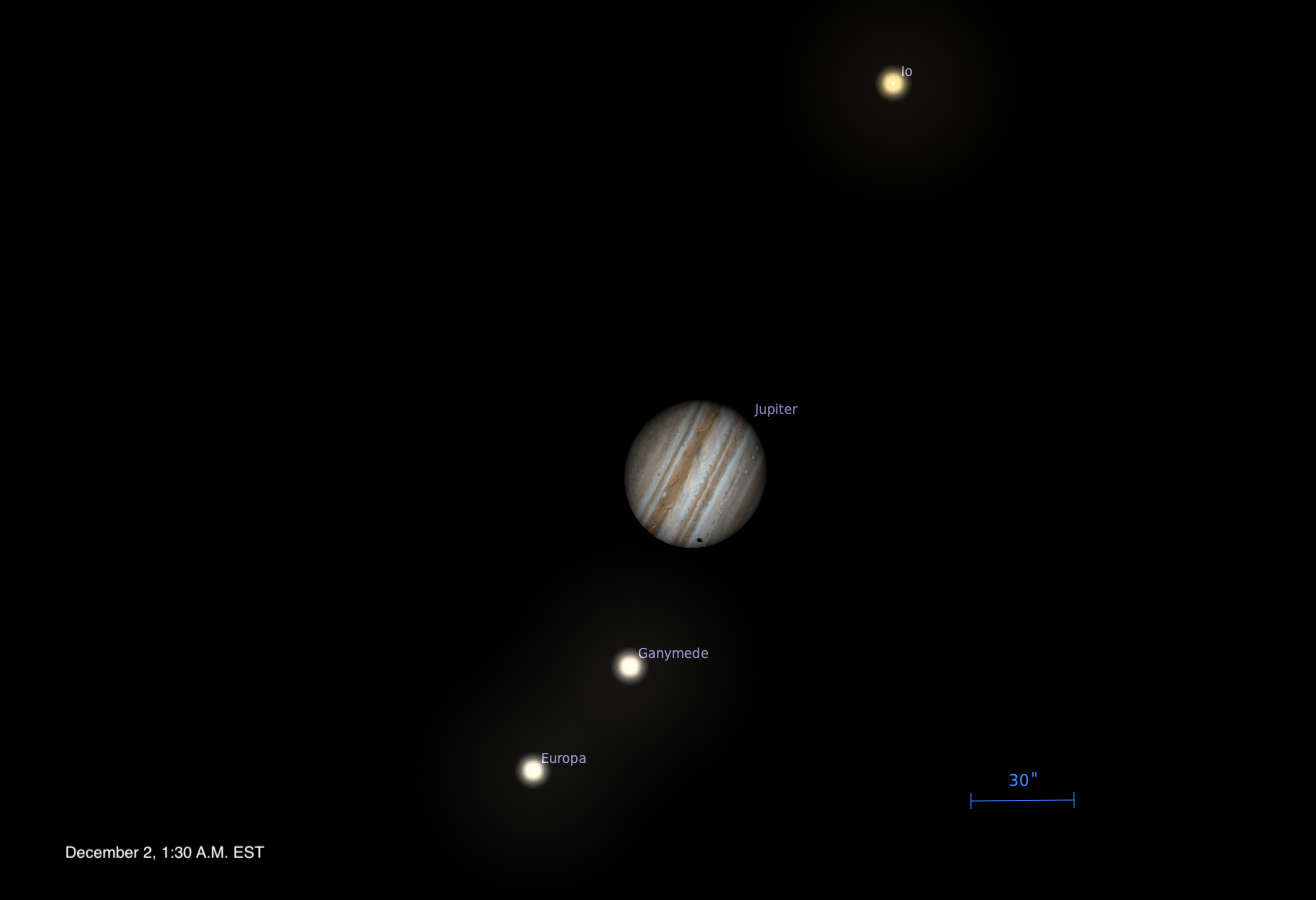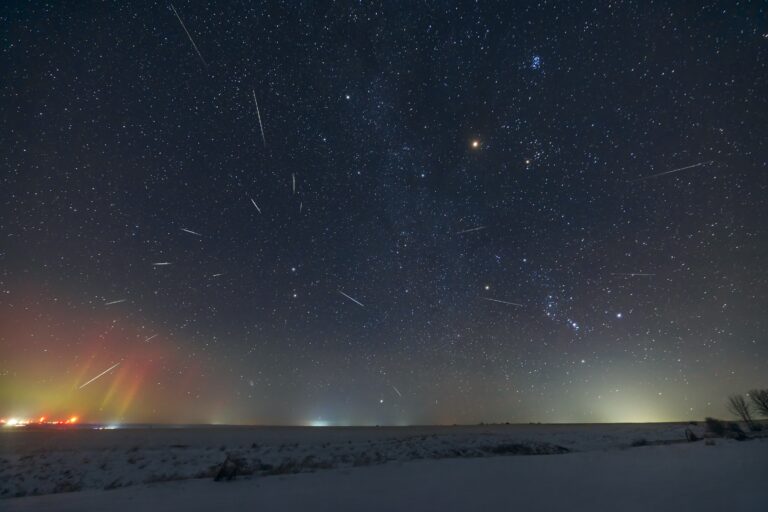Key Takeaways:
Last Quarter Moon arrives at 3:36 p.m. EST. It rises in the eastern sky around 11:30 p.m. local time and reaches its peak in the south around sunrise tomorrow morning, by which time it appears slightly less than half-lit. Throughout this period, our satellite resides among the background stars of western Leo the Lion.
Saturday, November 11
The second-brightest asteroid of 2017 puts on a nice show in November. Minor planet 7 Iris reached opposition and peak visibility in late October, and it now rides high in the late-evening sky among the background stars of Aries the Ram. Iris glows at 7th magnitude and should be a breeze to spot through binoculars even from the suburbs. This evening, you can locate the asteroid 1.4° south of Aries’ second-brightest star, magnitude 2.7 Beta (β) Arietis, and just 0.6° east of magnitude 3.9 Gamma (γ) Ari.
Sunday, November 12
Mercury passed on the far side of the Sun more than a month ago, and it is only now returning to view at dusk. From the southern United States this evening, you can find the innermost planet 5° above the southwestern horizon 30 minutes after sunset. (It appears higher the farther south you live and lower from more northerly latitudes.) Mercury shines brightly at magnitude –0.3 and should be easy to spot through binoculars. If you look carefully, you should pick up the glow of the 1st-magnitude star Antares just 2° to its lower left. A telescope reveals the planet’s disk, which spans 5.5″ and shows a gibbous phase.
Monday, November 13
The finest planetary conjunction of 2017 takes place in the predawn sky. Venus and Jupiter rise together in the east-southeast some 70 minutes before sunrise and climb 5° high a half-hour later. Venus shines at magnitude –3.9 and appears just 0.3° to the left of magnitude –1.7 Jupiter. Binoculars deliver stunning views of the two set against the growing twilight, while a telescope shows both in a single field. Venus measures 10″ across and appears nearly full while Jupiter spans three times that diameter and lies at the center of an entourage of four bright moons. During the following days, Jupiter will climb higher while Venus sinks closer to the horizon.
The waning crescent Moon points the way to Mars this morning. Luna rises shortly before 3 a.m. local time and Mars follows about a half-hour later. The Red Planet lies some 8° below the Moon as the two climb together with the background stars of Virgo the Maiden. Of course, the magnitude 1.8 Red Planet stands out in the eastern morning sky all week, rising some three hours before the Sun and climbing nearly 20° high as twilight starts to paint the sky. Unfortunately, the view through a telescope proves disappointing — Mars spans just 4″ and shows no detail.
Wednesday, November 15
Uranus reached opposition and peak visibility less than a month ago, and it remains a tempting target. The outer planet appears in the southeast after darkness falls and climbs highest in the south around 10 p.m. local time. The magnitude 5.7 world lies in southeastern Pisces, 2.7° west of magnitude 4.3 Omicron (ο) Piscium, the brightest star in this part of the constellation. Although Uranus shines brightly enough to glimpse with the naked eye under a dark sky, use binoculars to locate it initially. A telescope reveals the planet’s blue-green disk, which spans 3.7″.
Thursday, November 16
The waning crescent Moon forms a spectacular trio with Venus and Mars this morning. Jupiter stands 3° above Venus while the wafer-thin Moon appears 6° above the giant planet.
Friday, November 17
This morning marks the peak of the annual Leonid meteor shower. Astronomical conditions should be nearly perfect because the Moon remains out of the sky all night. (It reaches its New phase tomorrow morning.) An observer under a clear, dark sky can expect to see up to 10 “shooting stars” per hour. The meteors appear to radiate from a point in the Sickle asterism of Leo the Lion, a region that rises in late evening and climbs high in the southeast before dawn. Prime viewing occurs between approximately 3 a.m. local time and the start of twilight some two hours later.
Look high in the south after darkness falls this week, and you should see autumn’s most conspicuous star group. The Great Square of Pegasus stands out in the evening sky at this time of year, reaching its peak around 8 p.m. local time. These four almost equally bright stars form the body of Pegasus the Winged Horse. The fainter stars that represent the rest of this constellation’s shape trail off to the square’s west.
New Moon occurs at 6:42 a.m. EST. At its New phase, the Moon crosses the sky with the Sun and so remains hidden in our star’s glare.
Sunday, November 19
The days of viewing Saturn in the evening sky are dwindling rapidly. Still, you can find the ringed world nearly 10° high in the southwest an hour after sunset. The planet shines at magnitude 0.5 and lies on the border between Ophiuchus and Sagittarius. (It crosses from the former constellation into the latter one today.) Although the best views of Saturn through a telescope came earlier in this apparition, it never hurts to take a final look. This week, the planet’s disk measures 15″ across while the ring system spans 35″ and tilts 27° to our line of sight.

